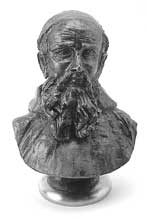GUIDO D’AREZZO (11th century)
The date and place of birth of Guido d’Arezzo are not certain. Perhaps he was born in Talla in the Province of Arezzo around the year 1000 and he was certainly a Benedictine monk in the Abbey of Pomposa, near to Ferrara. Called to the Pionta on the hill of the ‘Duomo Vecchio’ (Old Cathedral) in Arezzo by the Bishop Teodaldo in 1025, he set about his musical reform with the intention of facilitating prayer through song. In order to name his notes, he used syllables taken from the anthem to St. John the Baptist by Paolo di Warnerfrido (known as Paolo Diacono). “UT (replaced by DO) queant laxis Resonare fibris / Mira gestorum Famuli tuorum / SOLve polluti labii reatum / Sancte Jhoannes” (So that the faithful on the lento lyre / can sing about your great deeds / free impure lips from guilt / St. John). Through the Bishop Teodaldo, he was received by Pope Giovanni XIX between 1030 and 1032 and he approved of the brilliant idea of singing melodies according to a method, without having to learn the rhythms and intonations by heart. Guido later left Arezzo and died in Camaldoli, probably before he was very old.
|
|

|
|

